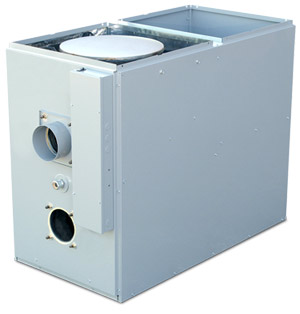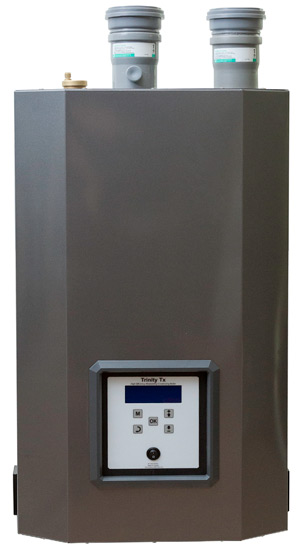Oil and Gas Forced-air Furnaces

Forced-air heating systems with a furnace as the heat source are the most common type of central heating system used in Canada. Forced-air systems can filter and humidify the air, they can also provide ventilation and central air conditioning.
Oil or propane is pumped from your storage tank to the furnace. This oil or gas is ignited by a pilot light and burned in a combustion chamber. The heat produced from the burning fuel heats a heat exchanger located in the furnace. The combusted gases are exhausted outside through a chimney or flue pipe. Cool air from your home is drawn from the cold air return ducts and circulated down over the heat exchanger, warmed, and then blown out of your hot air ducts.
Gas and Oil Boilers

A boiler provides heat through a hydronic distribution system using water to heat up your home through radiators, convectors, or under-floor. Fuel enters into the combustion chamber through a valve and flows through small openings called jets. This fuel is ignited and burned to produce the heat needed to warm up the water in the heat exchanger piping. This heated water is then circulated through the pipes throughout your home, usually connected to radiators. Water is transferred into the rooms as it passes through the pipes and/or radiator. The water is then returned back to the boiler to be reheated.
The same system can be used to provide hot water. A possible disadvantage is that there is no duct work available for central air conditioning and typically higher installation cost.
Energy Efficiency
The seasonal efficiency is an important factor in the heating cost equation. For example, if a furnace or boiler has an annual fuel utilization efficiency (AFUE) of 80%, this means 80% of the heat value in the fuel is being used and the other 20% is lost. Improving the efficiency of the heating equipment reduces energy use and cost. Take into account the overall cost of each system you are considering, including purchase price, installation cost and operating cost. A higher purchase price is usually compensated by lower operating costs.
Condensing gas furnaces are the most energy-efficient furnaces available. Condensing gas furnaces have an AFUE of between 90 and 97 percent. The added cost associated with purchasing a high-efficiency condensing gas furnace will be recovered easily through energy cost savings.
Installation
Your furnace should be installed by a qualified technician to make sure the work is done properly, safely and according to code. Also take into account the heat loss and heat gain characteristics of your house. A qualified heating contractor should properly determine the size of heating system for your home. Oversized heating equipment will cycle on and off more frequently. This will cause excessive temperature fluctuations and higher energy use.
Check out the Dettson website for more information on their products.
For more information on NTI products check out the NTI website .
Northumberland Heating and Air Conditioning can use other suppliers or brands on request.